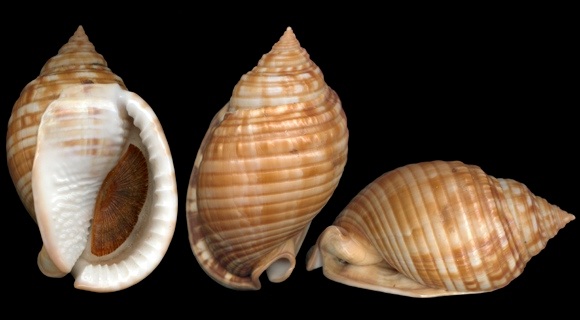
Predator on Echinoderms in the infralittoral and the circalittoral. Original taxon: Buccinum undulatum.
Bay of Napoli, Campania, W. Italy. 90mm.
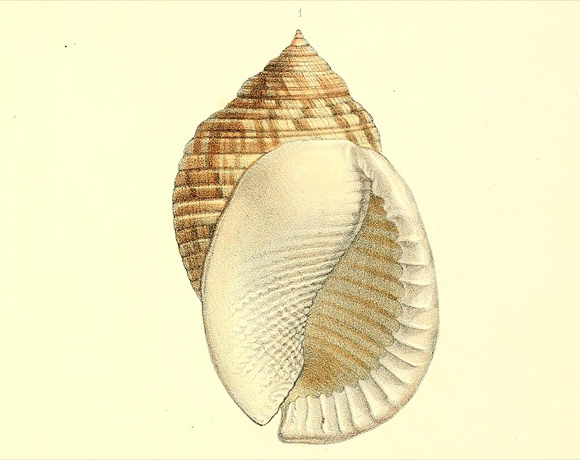
« Shell with a narrow and deep umbilicus, oval-inflated, pointed at the back, solid, thick, sometimes a little thin, somewhat glossy, adorned with transverse cords; its colour is whitish, dyed dark reddish and with spots or longitudinal series of the same color, more intense, scattered with much irregularity all over the surface; the suture is simple. The spiral is protruding, sometimes short, conical, pointed; it consists of 9 to 10 convex whorls; the first three or four are excessively small and smooth, the next three have small cords crossed by longitudinal grooves and the last ones offer transverse cords, being somewhat depressed near the suture; the last whorl is large, inflated, and its length is of circa the two-thirds of the total of the shell; it is surrounded by 18 strands that are quite wide, flattened, narrower gradually towards the front, separated by a sunken line, usually of a dark color; it presents in its anterior part a wide and deep groove, which follows the characteristic channel of the genus Cassis, which is, in this species, smooth. » – Ibid. p.3.
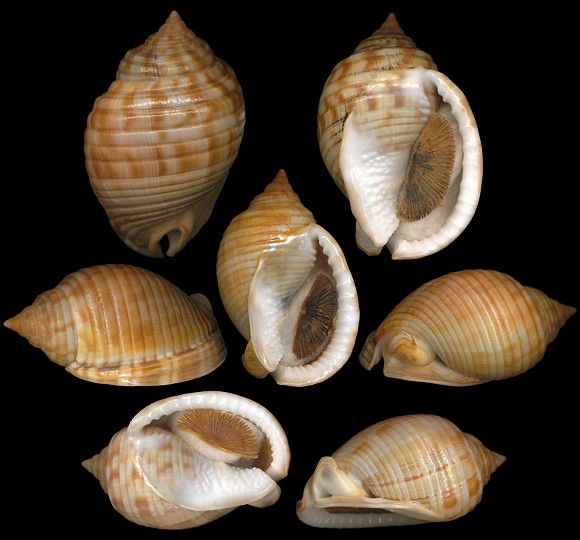
« The aperture is oval-pointed, reddish or brown inside, bright, with a wide and deep notch on the front; the right edge is regularly arched, it protrudes a little towards the whorl and is slightly grooved at the point of its insertion; on the outside it offers, in most of the specimens, a projecting, smooth, very wide, flattened and thick edge, with strips and transverse lines of the same colour as the spots of the last whorl; inside it is white, and bears generally about 18 transverse, projecting, sharp folds, which penetrate somewhat into the mouth; the left edge is white, it reflects and extends considerably on the last whorl, to which it is stuck in its posterior half; it is more or less thick, according to the individuals, and shows transverse wrinkles, both in its deepest part and near the insertion of the right edge; in the anterior half of the dilated part there are numerous granulations, some of which tend to join in certain specimens, forming small wrinkles. Operculum with lamellae radiated on the outside, with a serrated semicircular right edge and a full left edge, almost straight; the nucleus is marginal. » – Ibid. In this species, the longitudinal sculpture is almost absent, and always weak where it exists.
50-80m deep, off Almería, Andalucia, S. Spain. 59-70mm.
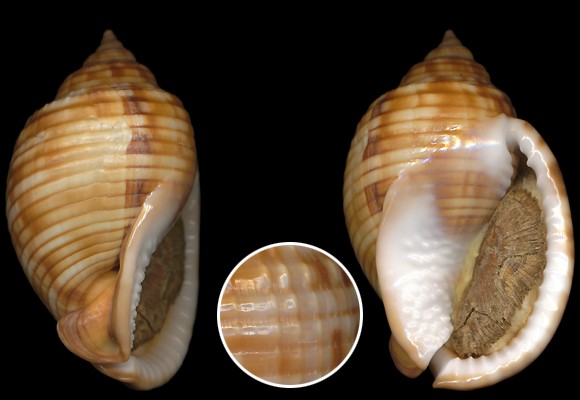
35-40m deep, on sand, in nets, Alger Bay, El Djazaïr, Algeria. 65mm. In the circle, detail of a granulata from the same spot.
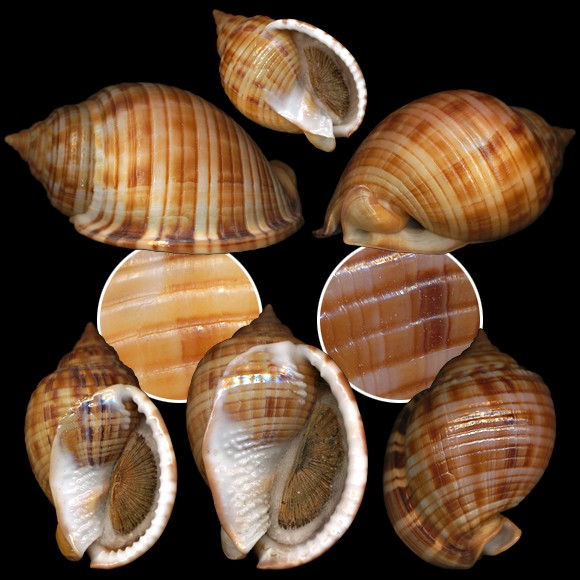
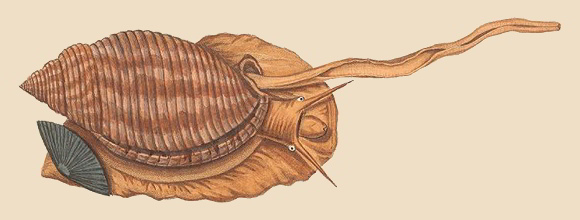
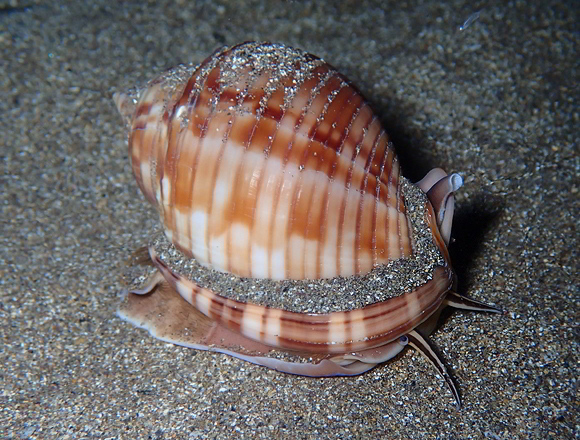
A specimen pictured at 14m deep, Calanque de Saména, south of Marseille, Provence, S. France. Notice the anterior siphon, retracted here while it was represented in full extension on Poli’s drawing. Notice also the striped pattern of the cephalic tentacles, which is not rendered in Poli.
Original picture provided by slebris for iNaturalist.
– (CC BY-NC) –
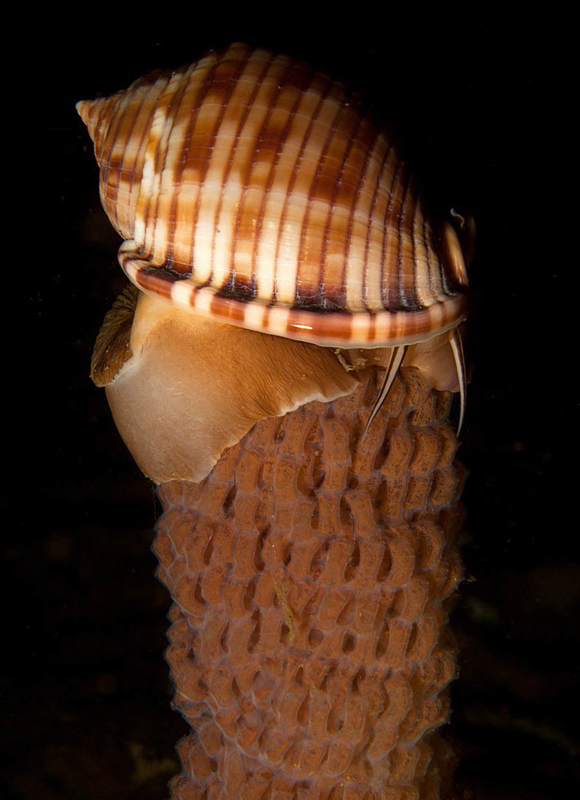
23m deep, La Vessant, Mataró, NE. of Barcelona, Catalunya, NE. Spain. Original picture provided by A. López-Arenas i Camas for iNaturalist – (CC BY-NC).